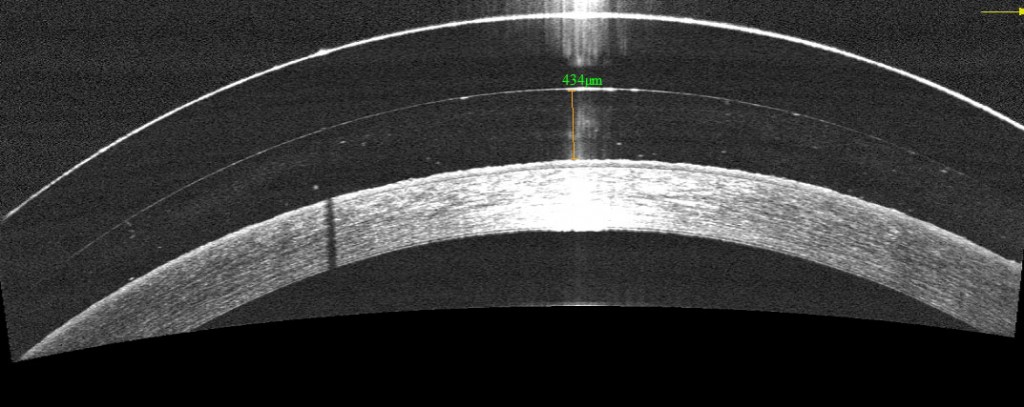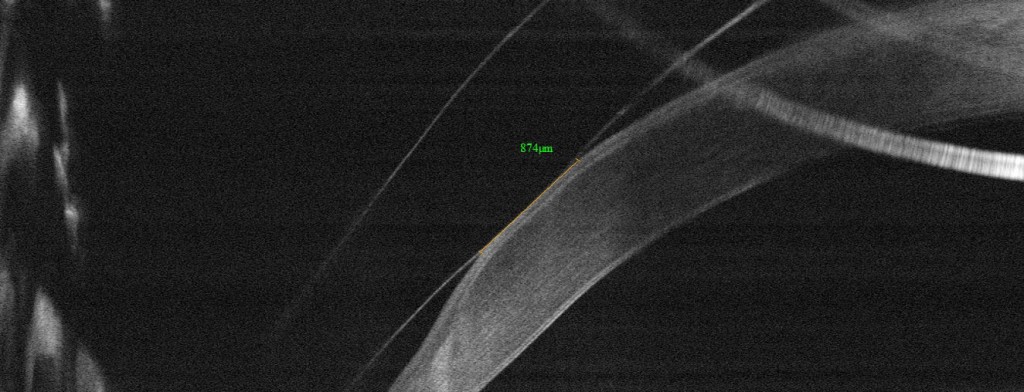5/1/14
Successful management with contact lenses can sometimes be a frustrating process for those with keratoconus. The fitting and evaluation process involves numerous visits to the optometrist, out of pocket expenses as well as medical insurance co-pays. Luckily, the contact lens industry has responded to the need to have better contact lens materials for patients with keratoconus. It used to be that the only contact lenses available to manage keratoconus were gas-permeable (GP) lenses. Now, more and more patients are being fit with newer generation hybrid lenses (GP lens core with a skirt of soft lens material to aid in fit and comfort) and scleral lenses (large diameter GP lenses that do not rest on the cornea, only the outlying sclera). These newer designs are intended to vault over the central cornea and do not rest on the cornea at all. They have resulted in much more comfortable and wearable strategies for full-time use. As a result of the newer lens designs, the game has changed when it comes to the science of fitting and evaluating the lenses.
For years, optometrists have used corneal topography to guide their decision making on fitting keratoconic eyes. A corneal topographer is an instrument that maps the shape of the cornea, and gives information much like that of a topographical map for hiking. Corneal topography is still an absolutely mandatory part of evaluating the shape of the cone, the simulated corneal curvature, and monitoring for progression of the disease, and is not a standard part of a typical eye examination. However, doctors have a new tool at their disposal for fitting contact lenses on patients with keratoconus.
Optical Coherence Tomography (OCT) was once reserved for use in the back of the eye, or retina. OCT uses visible light passed through the clear structures of the eye to generate a cross-sectional image of the layers of the retina, much like an image generated by an MRI. Advances in OCT technology has improved the resolution to image the eye on the micrometer scale (one-thousandth of a millimeter). OCT technology is now commercially available not only for the retina, but the structures of the front part of the eye. The obvious application is to aid the doctor in the fitting and evaluating complex contact lenses that vault the cornea.

OCT allows the optometrist to view a cross-sectional image of the contact lens on the eye in real time and to monitor the health of the cornea in the presence of the contact lens. This view is valuable for judging the vault of new designs of contact lenses over the cornea and judging where the lenses land on the eye. It is the most specific way to determine if the fit is acceptable and to troubleshoot if lenses are not fitting appropriately.


Optometrists now have a much more powerful tool for evaluating and managing even the most challenging contact lens fits. It remains to be seen whether this technology has the ability to reduce the number of visits required for successful fit. But, the precision afforded by this technology does have the ability to improve patient outcomes.
 Jeffrey Sonsino, OD, FAAO
Jeffrey Sonsino, OD, FAAO
The Contact Lens Center at Optique Diplomate
Cornea, Contact Lens, and Refractive Therapies

